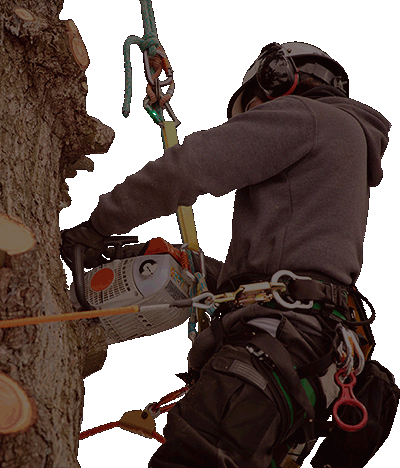
Proudly living up to their title, evergreens are a constant symbol of emerald beauty in our landscape. They hold on to their needles or leaves year-round and always stay green.
But when plagued by harsh weather or infestation in winter, evergreens can’t showcase the glowing green we love.
Evergreen Spartanburg trees turning brown can be an eyesore and cause for concern. Read on to learn how to give your Spartanburg tree a quick inspection and follow up with protective care.
Why Your Evergreen Trees Are Turning Brown in Winter and What to Do
To pinpoint how to fix your evergreen trees’ brown needles, let’s look at a few reasons why it shifted color.
1. Winter weather woes
Problem: Winter elements are notoriously tough on trees, but evergreens are especially vulnerable. Roots rely on water stored in Spartanburg tree needles once the ground freezes. This can drain the tree’s water stash quickly, causing the needles to turn brown from dryness.
Solution: If the Spartanburg tree is just suffering from dehydration, a protective spray for evergreens is a quick and effective fix. More info on this below.
2. Sunny days
Problem: Take the already dry winter and add in the beating sun—now your Spartanburg tree has even thirstier needles. Known as sunscald, needles in the direct sunlight turn uniformly brown because of the extra water loss. You may also see dead or dried areas of bark.
Solution: You can try an anti-desiccant spray to help with the dryness. We’ve got all the details below. As for the sunscald, wrap your trees’ bark in burlap to keep them warm and protect them from the winter elements.
3. An infecting intruder
Problem: Evergreens attract a few common pests and diseases, like the pine beetle or cytospora canker disease. Browning needles can be a symptom of infection, along with small holes, sawdust or large cankers leaking white sap on branches.
Solution: We recommend you call in an arborist to figure out a course of action.
What is an anti-desiccant spray for plants? How do I use it?
An anti-desiccant is a waxy coating sprayed on plants to shield them from moisture loss. Applying the film in winter is said to safeguard Spartanburg trees until spring.
For best results, we like to wait until the temperature drops to 40-50 degrees F. It's important to check that there’s no rain in the forecast for at least 24 hours. Using the anti-desiccant in the right elements at the right time is essential to avoiding Spartanburg tree damage.
Our technicians do a couple rounds of spraying the formula on dry needles, once in December and again in February. Then, your Spartanburg tree is good to go for the season!






